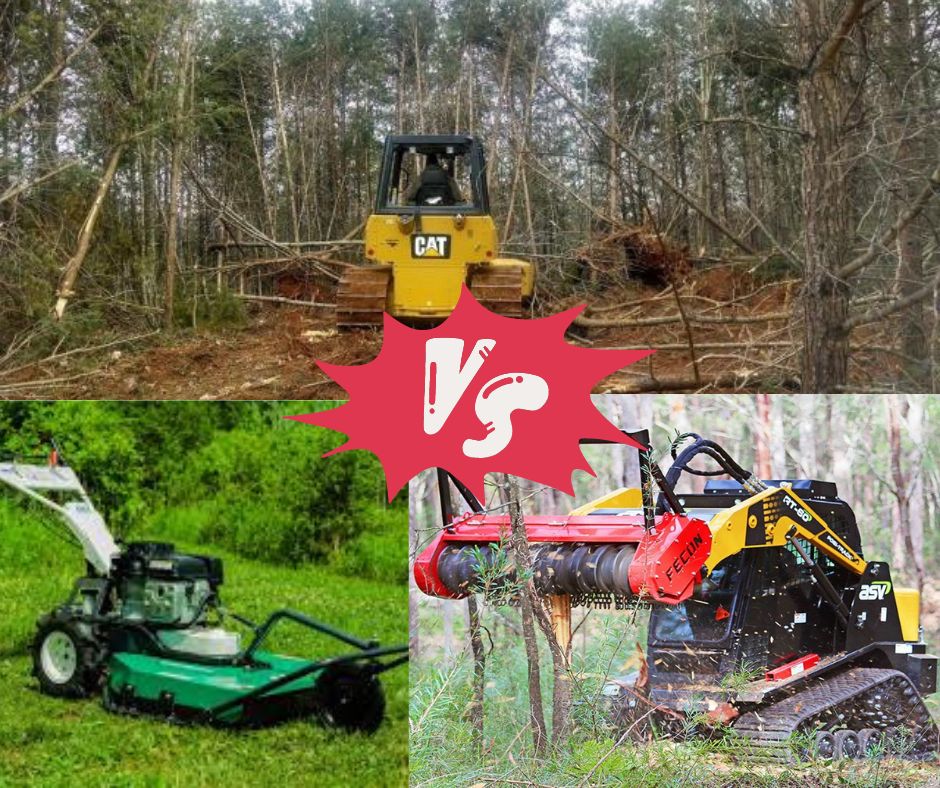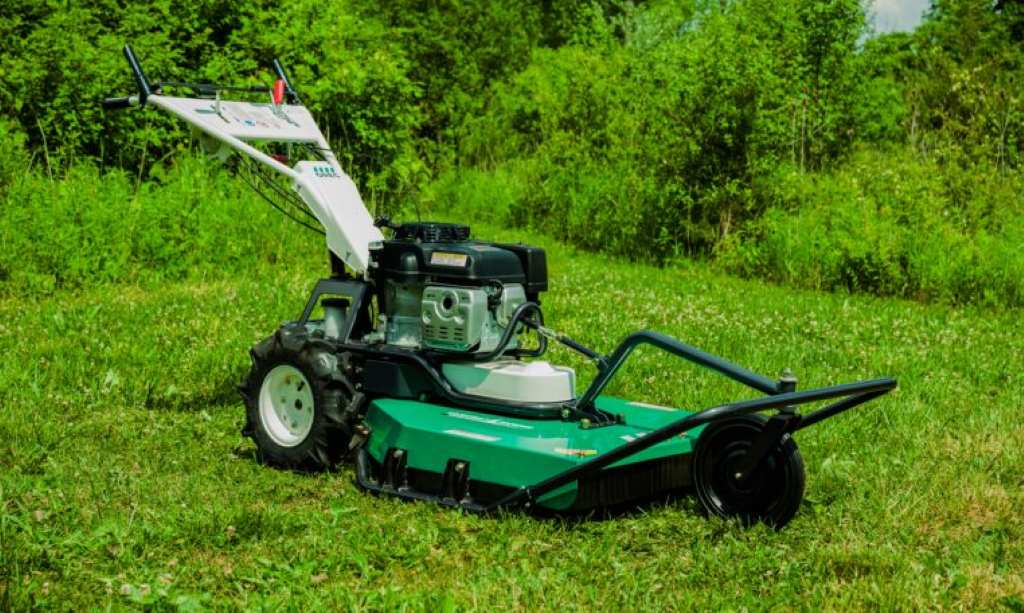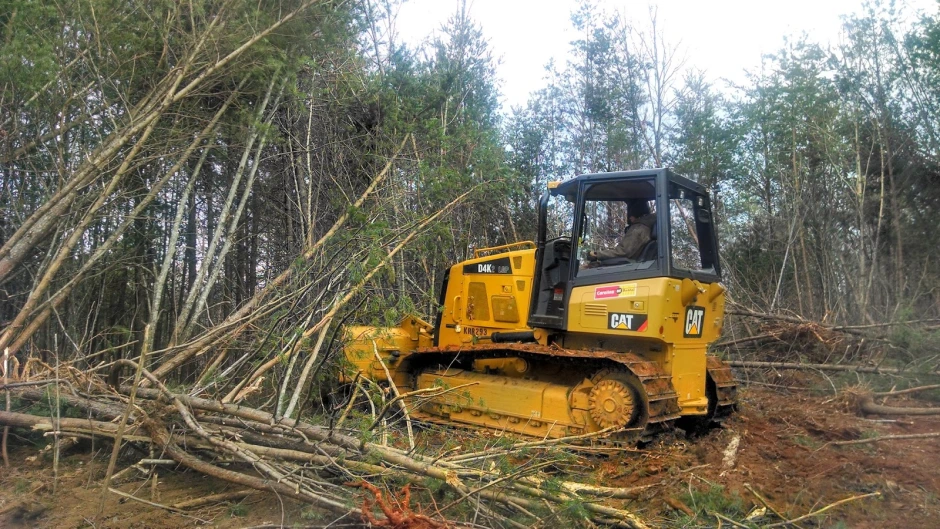
Clearing a piece of land can be a huge undertaking, whether you’re creating a beautiful garden, preparing for construction, or managing a sprawling forest. Choosing the right tool can make a world of a difference in terms of efficiency, cost, and the long-term health of your land. Three of the most commonly considered options are:
- Forestry Mulchers
- Brush Cutters
- Dozers
Let’s explore each of their strengths, limitations, and ideal use cases.
Forestry Mulchers: The Versatile Workhorses

Think of a forestry mulcher as a giant wood chipper on wheels or attached to an excavator. These powerful machines use spinning drums with teeth to shred and grind trees, brush, and stumps directly into mulch.
- Pros:
- Efficiency: Large-scale clearing with a single machine
- Eco-friendly: Creates useful mulch while preventing soil erosion
- Minimal Ground Disturbance: Reduces the need for heavy burning or hauling
- Cons:
- Higher Cost: Specialized equipment tends to be expensive
- Slower on Large Trees: Best suited for trees under a certain diameter
- Potential Safety Hazard: Can throw debris at high speeds
Brush Cutters: The Nimble and Affordable Option

Brush cutters come in various forms, from handheld trimmers to powerful walk-behind or tractor-mounted machines. They use blades or rotating heads to slice through dense brush, tall grass, and smaller saplings.
- Pros:
- Affordability: Lower cost of entry
- Maneuverability: Great in tight spaces or around obstacles
- Less Ground Impact: Ideal for areas where soil disturbance is a concern
- Cons:
- Limited Power: Best for smaller vegetation, not large trees
- Labor-Intensive: Can be physically demanding, especially for larger areas
- May Leave Debris: Requires additional cleanup unless mulching models are used
Dozers: When Raw Power is Essential

Dozers are massive, powerful tracked vehicles equipped with a large blade for pushing and scraping. They excel at leveling ground, uprooting large trees, and moving piles of earth or debris.
- Pros:
- Immense Power: Handles the heaviest clearing jobs
- Ground Leveling Capability: Creates a clear, flat surface
- Durability: Built for tough conditions
- Cons:
- High Environmental Impact: Causes significant soil disturbance and erosion
- Expensive: Purchase, operation, and potential restoration costs
- Lack of Finesse: Not ideal for selective clearing
Read Also: What is the Difference Between a Tiller and a Cultivator?
Making the Right Choice
The best tool depends on your project’s specific needs:
- Small-Scale Clearing, Light Maintenance: Brush cutters are likely the most economical and practical choice.
- Medium to Large Areas with Trees and Brush: Forestry mulchers are an excellent investment if your budget allows.
- Heavy Grading and Major Overhaul: A dozer might be necessary but be mindful of its impact.
Additional Considerations
- Terrain: Steep slopes or rocky ground may limit the use of certain machines.
- Vegetation Type: Assess the size and density of the trees and brush.
- Post-Clearing Plans: Do you simply want clear land or a mulched, ready-to-plant surface?
Always Remember: Safety is paramount when using heavy machinery. Consult with professionals if you are unsure or if the project is particularly large.
By understanding the unique capabilities of each tool and carefully considering your project requirements, you can make an informed decision that saves time, money, and effort in your land clearing endeavors.





